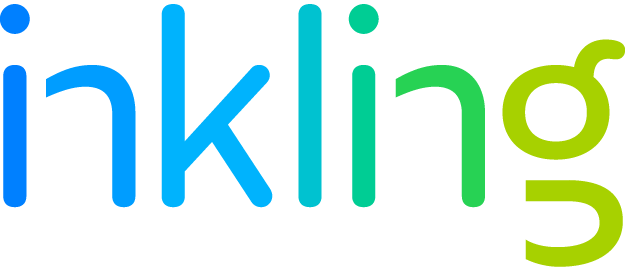A Guide to Developing Effective Hospital Training and Development Programs

Delivering superior care while fostering the professional growth of hospital staff presents a plethora of challenges. To triumph in this endeavor, a well-structured and comprehensive training and development program is paramount. Allow me to share invaluable insights and practical tips that will help you craft compelling hospital training and development programs, driving excellence and nurturing a culture of continuous learning.
What are Hospital-Based Training Programs?
Hospital-based training programs are like real-life boot camps for folks gearing up for careers in healthcare. Imagine it as the place where the textbooks meet the action-packed drama of a hospital setting. So, you’ve got medical residents getting hands-on with patients, nursing interns diving into the hustle and bustle of healthcare, and med students doing their clinical dance.
It’s not just about hitting the books; it’s about donning scrubs, navigating hospital hallways, and immersing yourself in the real deal. These programs are where future doctors, nurses, and various healthcare superheroes get their capes.
Whether you’re stitching up wounds, running lab tests, or perfecting the art of patient care, these training gigs are the proving grounds. Think of it as a mix of classroom wisdom and on-the-job training – a dynamic blend to prepare you for the fast-paced world of healthcare.
And hey, it’s not just for the big shots like doctors. Radiologic technologists, respiratory therapists, and other health warriors also get their share of the action in these hospital-based training programs. It’s a bit like a healthcare adventure camp, but with serious learning goals – because when lives are on the line, you want your healthcare team to be top-notch, battle-tested, and ready for anything.
1. Conduct a Needs Assessment
A comprehensive needs assessment acts as the foundation for designing an effective hospital training and development program. This pivotal step involves evaluating the current skill sets, knowledge levels, and areas requiring improvement within the hospital’s workforce.
Identifying Specific Needs and Gaps:
- Patient Safety: Assess the current practices and protocols regarding patient safety measures. Identify gaps in knowledge or adherence to safety guidelines among staff.
- Regulatory Compliance: Evaluate the hospital’s adherence to healthcare regulations and standards. Determine areas where staff might lack sufficient understanding or compliance with regulatory requirements.
- Specialized Clinical Skills: Analyze the proficiency of healthcare professionals in specialized clinical skills relevant to their roles. Identify any gaps in skill levels or advancements in specialized procedures or technology that necessitate healthcare employee training.
Collecting Insights and Feedback:
- Employee Input: Conduct surveys, focus groups, or one-on-one interviews with staff members across various departments. Gather their perspectives on existing healthcare employee training, areas for improvement, and skill gaps they perceive.
- Department Heads and Stakeholders: Engage department heads, supervisors, and key stakeholders to understand their observations and expectations regarding staff training needs. Their insights offer a managerial perspective on skill deficiencies or operational challenges.
Utilizing Feedback for Tailored Programs:
- Data Analysis: Analyze the data collected from surveys, feedback sessions, and assessments to identify recurring themes or critical areas needing attention.
- Identifying Priority Areas: Prioritize training focus areas based on the severity of skill gaps, criticality to patient care, or regulatory importance.
- Customization: Tailor training programs to address specific needs identified during the assessment. Design modules or courses that directly tackle identified skill gaps or knowledge deficiencies.
Benefits of a Comprehensive Needs Assessment:
-
- Precision in Training Design: Ensures that training initiatives are purposeful and directly address identified skill deficiencies.
- Cost-Effectiveness: Avoids unnecessary spending on generalized training by investing in targeted programs aligned with actual needs.
- Employee Engagement: Involves staff in the process, demonstrating a commitment to their training and development and encouraging buy-in for the training programs.
2. Define Clear Employee Learning Objectives
Ensure each learning objective is clear and precise, outlining the exact skill, behavior, or knowledge that staff should acquire. For instance:
- Enhance patient communication skills by improving empathy and active listening during interactions.
- Improve infection control practices by implementing proper hand hygiene protocols and understanding isolation procedures.
- Promote effective teamwork in emergencies by practicing clear communication and role allocation during simulated scenarios.
Measurable Criteria
Establish measurable criteria to gauge the achievement of each objective. This allows for tracking progress and assessing the success of the training. For example:
- Patient communication skills can be measured through patient satisfaction surveys or observed improvements in patient interactions.
- Infection control practices can be measured by assessing adherence to protocols or reduction in infection rates.
- Effective teamwork in emergencies can be measured by evaluating response times, coordination, and successful outcomes during simulations.
Attainable and Realistic Goals
Ensure that the objectives set are feasible and within reach for the staff undergoing training. Setting unattainable goals can demotivate participants. Make objectives realistic by considering:
- Providing adequate resources and support for skill enhancement, such as communication workshops or team-building exercises.
- Offering access to necessary tools and training materials for infection control practices.
- Conducting regular emergency drills and providing relevant training sessions to simulate realistic scenarios.
Relevance to Hospital Needs
Align objectives with the hospital’s priorities, current challenges, and strategic goals. This ensures that training efforts directly contribute to addressing critical areas. For instance:
- Patient communication skills are vital to enhancing patient satisfaction and quality of care, aligning with the hospital’s focus on patient-centered care.
- Improved infection control practices directly impact patient safety and reduce healthcare-associated infections, aligning with the hospital’s commitment to safety standards.
- Effective teamwork in emergencies aligns with the hospital’s goal of ensuring efficient responses and optimal patient outcomes during critical situations.
Time-Bound Objectives
Setting time-bound objectives is like giving your goals a deadline, which adds a crucial element of urgency and motivation for your staff to strive towards timely improvements. Let’s dive deeper into how this works:
Examples in Hospital Settings
- Enhancing Patient Communication Skills within Three Months: By setting a deadline of three months to enhance patient communication skills, you’re ensuring that this improvement becomes a priority within a reasonable timeframe.Implementing regular training sessions and assessments provides structured opportunities for staff to develop and refine their communication abilities, ultimately leading to better patient interactions and satisfaction.
- Improving Infection Control Practices by the End of the Quarter: Setting a deadline of the end of the quarter for improving infection control practices creates a sense of urgency to address this critical issue promptly. Comprehensive training and audits conducted within this timeframe help identify areas for improvement and ensure that necessary protocols are implemented effectively to minimize the risk of infections spreading within the hospital.
- Promoting Effective Teamwork in Emergencies within Six Months: Establishing a timeline of six months to promote effective teamwork in emergencies allows for a focused and sustained effort to enhance collaboration and coordination among staff members. Ongoing training sessions and scenario simulations conducted over this period help build teamwork skills and preparedness, ensuring that the hospital’s emergency response capabilities are continuously strengthened.
Utilizing SMART Objectives
By incorporating time-bound objectives into the SMART (Specific, Measurable, Achievable, Relevant, Time-Bound) framework, hospital training programs become measurable, and aligned with the organization’s learning and development goals. This structured approach ensures that efforts are directed towards tangible outcomes, such as enhanced skill development and improved patient care, ultimately contributing to the hospital’s overall success and effectiveness.
3. Customize Training Content
Personalization in hospital training programs is a pivotal approach that acknowledges the diverse learning styles and requirements of healthcare professionals. Tailoring training to individual preferences and needs fosters a more engaging and effective learning environment. Here’s a detailed exploration:
Customized Learning Pathways:
- Role-based Content: Deliver training materials specific to different job roles (nurses, doctors, administrative staff).
- Interest-Based Modules: Allow access to additional resources based on individual interests (clinical research, patient care, administrative skills).
- Skills Improvement: Offer targeted content to address areas needing improvement (communication skills, technical expertise, patient management).
Adaptive Content Delivery:
- Varied Learning Formats: Provide content in multiple formats (videos, text, interactive modules) to accommodate diverse learning preferences.
- Self-Paced Learning: Enable learners to progress at their preferred speed, allowing those who grasp concepts quickly to move forward while ensuring a thorough understanding for others.
Resource Accessibility:
- Mobile-Friendly Materials: Ensure compatibility with various devices, allowing staff to access training materials conveniently on smartphones, tablets, or laptops.
- 24/7 Availability: Offer flexibility in accessing resources anytime, anywhere, aligning with the demanding schedules of healthcare professionals.
Skill-Specific Modules:
- Clinical Expertise: Provide in-depth modules tailored to different medical specialties (cardiology, oncology, pediatrics).
- Soft Skills Development: Offer modules focusing on interpersonal skills, leadership, conflict resolution, and empathy in patient care settings.
Personalized Assessments and Feedback:
- Individualized Assessments: Tailor assessments to evaluate proficiency in specific skills or knowledge areas relevant to each role.
- Customized Feedback: Provide feedback and suggestions for improvement aligned with individual learning objectives.
Continuous Improvement and Adaptation:
- Feedback Mechanisms: Encourage learners to provide feedback on the relevance and effectiveness of training materials.
- Adaptive Curriculum: Use learner feedback to adapt and refine content, ensuring ongoing relevance and effectiveness.
Performance Tracking:
- Individual Progress Reports: Offer employees visibility into their learning journey, including completed modules, achievements, and areas needing further attention.
- Tracking Learning Outcomes: Monitor how personalized learning impacts job performance and patient care, allowing for adjustments to optimize outcomes.
Personalizing hospital training programs not only addresses individual learning needs but also enhances engagement, retention, and the application of knowledge in clinical settings. It serves as a cornerstone for a more efficient, effective, and learner-centric approach to healthcare training.
4. Engage Subject Matter Experts
Collaboration with Subject Matter Experts (SMEs) significantly elevates the quality of hospital training programs. SMEs, possessing profound expertise in their respective domains, offer invaluable insights into industry advancements and best practices. Engaging physicians, nurses, and other seasoned professionals in the training and development of healthcare organizations and the delivery of training materials is pivotal for ensuring content relevance, accuracy, and alignment with hospital objectives.
Why SME Collaboration is Crucial:
- Specialized Expertise: SMEs bring in-depth knowledge in specific areas, offering insights into the latest medical practices, technological innovations, and regulatory requirements.
- Real-world Insights: Their practical experience allows them to incorporate real-life scenarios, case studies, and practical applications into training materials, enhancing their practicality and relevance.
- Content Relevance: By involving SMEs, training content remains current, ensuring that staff receives up-to-date information, which is crucial in rapidly evolving healthcare landscapes.
How to Engage SMEs Effectively:
- Identify Key Areas: Determine the specific areas where SME contributions are needed. Focus on subjects like clinical procedures, patient care protocols, or emerging technologies.
- Establish Collaborative Platforms: Create forums or working groups where SMEs can actively contribute, exchange ideas, and collaborate on content development.
- Feedback Integration: Encourage SMEs to provide ongoing feedback on the relevance and effectiveness of training materials to ensure continual improvement.
- Diverse Representation: Engage SMEs from diverse departments and specialties to ensure a comprehensive and well-rounded perspective in content creation.
Benefits of Involving Different Healthcare Professionals:
- Physicians: Offer insights into advanced medical procedures, treatment protocols, and the latest medical advancements.
- Nurses: Provide practical knowledge on patient care, medication administration, and best practices in healthcare delivery.
- Technicians & Specialists: Contribute expertise in utilizing specialized medical equipment and handling diagnostic tools, ensuring staff proficiency in using these technologies.
Outcomes of Effective SME Collaboration:
- Accurate and Timely Information: Training content is aligned with the most recent medical standards and practices.
- Increased Relevance: Materials resonate with frontline staff, addressing real challenges encountered in daily healthcare settings.
- Improved Engagement: Training becomes more relatable and engaging due to practical insights from professionals actively working in the field.
In summary, engaging SMEs in the development of hospital training materials is a strategic approach to ensure the delivery of comprehensive, accurate, and relevant content. Their input guarantees that training aligns with the hospital’s objectives, industry standards, and the dynamic needs of healthcare delivery.
5. The Power of BYOD
BYOD allows hospital staff to access training materials and resources using their devices, such as smartphones, tablets, or laptops. This accessibility promotes convenience as employees can engage in training at their own pace and at a location that suits them best. By eliminating the need for dedicated training equipment, BYOD streamlines the training process and increases flexibility for both staff and trainers.
Using personal devices for training creates a familiar and comfortable learning environment for employees. They can leverage the devices they already use in their daily lives, enhancing engagement and reducing the learning curve associated with new technologies. This familiarity with their own devices enables staff to quickly adapt to the training materials, resulting in improved retention and application of knowledge.
6. Monitor and Evaluate Progress
Evaluation of training programs is critical to ensure their effectiveness and relevance in achieving desired outcomes. Establishing robust evaluation methods and metrics helps in gauging the impact and making informed improvements.
1. Define Evaluation Metrics
Identify specific metrics aligned with the training program’s objectives and hospital goals. These metrics should be measurable and indicative of progress or success. Some key evaluation areas include:
- Employee Satisfaction: Measure participant satisfaction through surveys or feedback mechanisms to assess the training’s perceived value and relevance.
- Knowledge Acquisition: Evaluate the increase in knowledge and skills post-training through assessments, quizzes, or pre-and post-tests.
- Application of Skills: Assess how effectively participants apply newly acquired skills or knowledge in their daily roles or in specific scenarios.
2. Monitor Key Performance Indicators (KPIs)
- Employee Engagement: Gauge the level of engagement during training sessions or modules. High engagement often correlates with better learning outcomes.
- Retention Rates: Measure how much of the learned material is retained over time to determine the training’s long-term impact.
- Performance Improvement: Track improvements in job performance metrics post-training, such as reduced error rates, increased efficiency, or enhanced patient care.
3. Gather Participant Feedback
- Surveys: Conduct surveys immediately after training sessions to gather immediate feedback on content, trainer effectiveness, and overall experience.
- Focus Groups: Organize discussions or focus groups to delve deeper into participants’ experiences and gather qualitative insights.
- One-on-One Interviews: Engage selected participants in individual interviews to collect more detailed feedback on specific aspects of the training.
4. Regularly Review and Adjust
- Data Analysis: Analyze collected data regularly to identify trends, strengths, weaknesses, and areas for improvement.
- Identify Gaps: Pinpoint any gaps or discrepancies between expected and actual outcomes and areas where the training fell short.
- Make Informed Adjustments: Based on the evaluation findings, make necessary adjustments to content, delivery methods, or training schedules to address identified gaps or emerging needs.
5. Continuous Improvement Cycle
- Iterative Process: Evaluation is an ongoing process, not a one-time event. Continuously gather feedback and review outcomes to ensure the training remains relevant and effective.
- Adaptability: Be open to adapting training methods, materials, or approaches to meet changing needs or emerging trends in healthcare or employee learning preferences.
Implementing a robust evaluation strategy ensures that hospital training programs evolve to meet the evolving needs of both the staff and the healthcare landscape. Regular assessment and adaptation contribute to continuous improvement and the delivery of high-quality care.
7. Foster a Culture of Continuous Learning
A strong training and development program extends beyond initial onboarding and should encourage lifelong learning among hospital staff. Offer ongoing skills development opportunities, such as continuing education courses, workshops, and conferences. Emphasize the importance of staying updated with industry trends, technological advancements, and evidence-based practices. By fostering a culture of continuous learning, hospitals can attract and retain top talent and remain at the forefront of healthcare innovation.
The Need for Hospital Training Software
Developing effective hospital training and development programs is vital for empowering employees, improving patient outcomes, and staying ahead in a rapidly evolving healthcare landscape.
By conducting thorough needs assessments, defining clear learning objectives, customizing content, engaging SMEs, implementing blended learning approaches, monitoring progress, and fostering a culture of continuous learning, hospitals can create impactful training programs that drive excellence and ensure ongoing professional growth. Contact or chat with us today to learn more about Inkling’s hospital training software and solutions!





